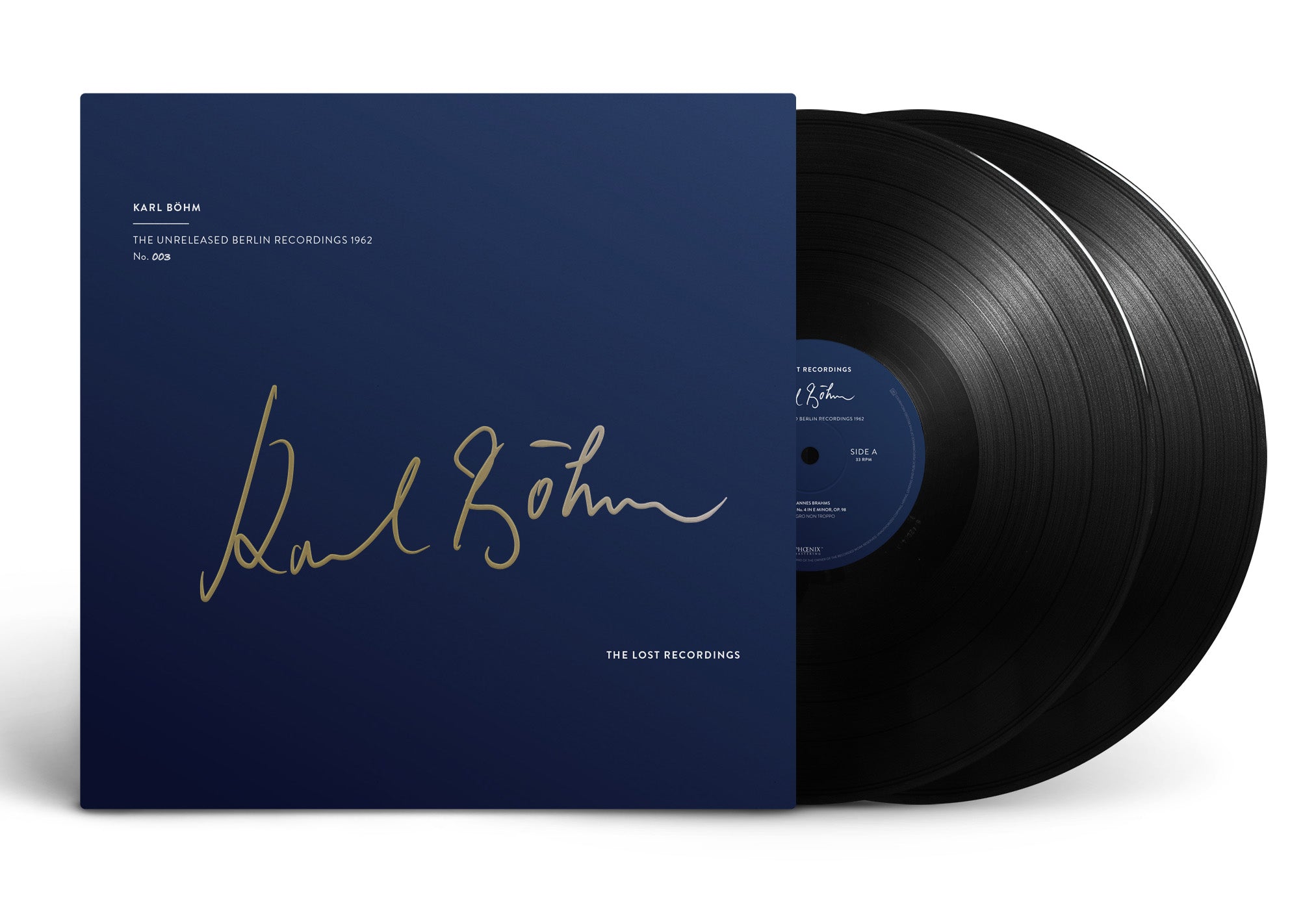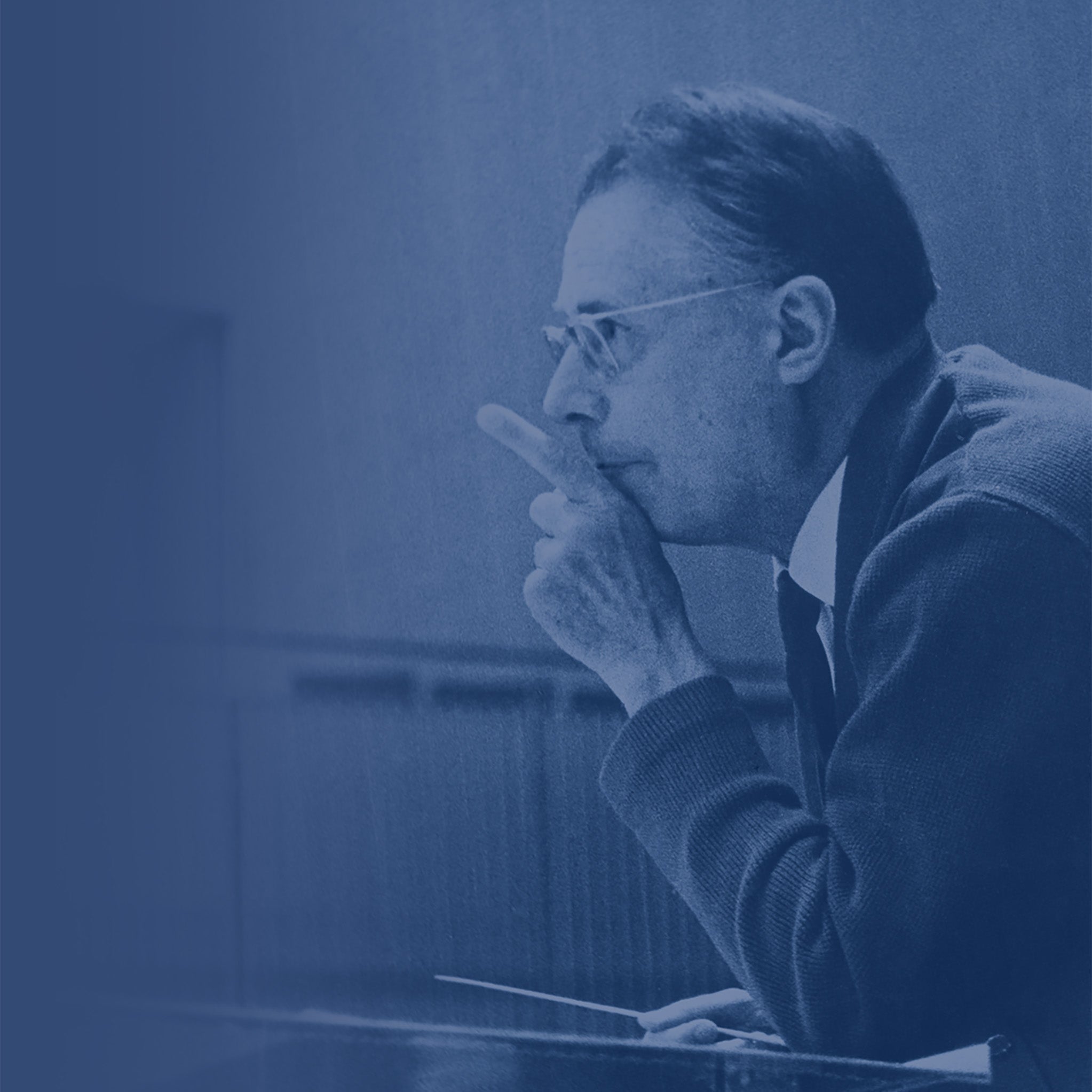Karl Bohm
THE UNRELEASED BERLIN RECORDINGS 1962
Dr. Karl Böhm
Böhm was 68 years old when, on 29 October 1962, he took up the baton in the legendary Saal 1 (studio number one) of the broadcasting corporation on Kaiserdamm Strasse in Berlin to conduct the Radio-Symphonie-Orchester. The programme comprised Symphony No. 4 by Johannes Brahms and Tod und Verklärung (“Death and Transfiguration”), a tone poem by Richard Strauss. For decades, Böhm had finely worked each melodic line, each harmony, each tempo.
Brahms’ Symphony No. 4 may be considered as the final emblem of the romantic symphony. Even though Brahms himself considered this as his most sombre symphony, he seems to have achieved a fine synthesis of the “modern” symphonic art initiated by Beethoven several decades earlier. This is one of Brahms’s most colourful works, one in which he gives a major role to the woodwinds and horns, particularly in the second movement. It opens with an exquisite theme that can be likened to a wave of passion and nostalgia that imbues the entire piece. This is perhaps why critic and musicologist Claude Rostand saw it as an “autumn symphony”. Böhm approaches it with his characteristic precision and sweeping tempi. Stripped of any extravagancy, the music conveys a message of great depth, bearing it to the summits of lyricism. Under the baton of Böhm, Brahms literally sings out, telling a story about the mysterious forces that shape destiny, a story of nature and the grandiose sites of Austria so dear to the hearts of both conductor and composer – including, too, the familiarity of the surrounding forests and melancholy legends.
In order to give the most faithful rendition of the warmth of this outstanding performance that has come to light after more than sixty years, we have been able to reap the benefits of the talent of the original Berlin sound engineers together with several weeks of restoration work by our own teams. We have opted to cut the first and second movements on two different sides to optimise the rendering of the sound.
Tod und Verklärung is one of Richard Strauss’s first tone poems, a genre created several years earlier by Liszt to give historical or ideological meaning to an orchestral work. Strauss in his youth used the genre as a pretext. He himself said that this work was purely a product of his imagination, not a result of an actual lived experience. “A simple musical idea, like any other.” But his actual aim was to free himself of the formal constraints of the symphony by taking inspiration from a non-musical subject. In this case, the subject is the final hours of a dying artist as his mind wanders between memories, suffering, pleasure and hope.
Naturally, Böhm is at home here: having shared a world with the composer for some twenty years, there is no doubt that Strauss and Böhm are as one. As critic Marcel Prawy wrote, “ The words used to describe major conductors are well-known. Their conducting is fascinating, extraordinary, pure genius. Karl Böhm simply conducts with authenticity”. There could be no more glowing compliment. Musician and broadcaster Clément Rochefort, talking of this “adventure into sound and metaphysics”, says of Tod und Verklärung, recorded that day in October 1962, that the Radio-Symphonie-Orchester had a supremely masterful guide at its helm: Karl Böhm.
Record 1
RECORD 2
- Karl Böhm, conductor
- Radio Symphony Orchestra Berlin
Recorded at Saal 1, RBB, Berlin, 29.IX.1962-01.X.1962
STEREO ℗ 1962 RBB
Remastered by ℗ & © 2024 THE LOST RECORDINGS
from the original analog tapes
Ref.: TLR-2403051V
33 rpm Lacquer-cuts: Kevin Gray
Double vinyl album 180g
Electroplating: United-Kingdom
1st edition, hand numbered: 2000 copies
New Tip-on gatefold printed in Italy
Pressed by Simon Garcia, Marciac, France
*A 16-bit album download card is included with the vinyl.
Dr. Karl Böhm
Böhm was 68 years old when, on 29 October 1962, he took up the baton in the legendary Saal 1 (studio number one) of the broadcasting corporation on Kaiserdamm Strasse in Berlin to conduct the Radio-Symphonie-Orchester. The programme comprised Symphony No. 4 by Johannes Brahms and Tod und Verklärung (“Death and Transfiguration”), a tone poem by Richard Strauss. For decades, Böhm had finely worked each melodic line, each harmony, each tempo.
Brahms’ Symphony No. 4 may be considered as the final emblem of the romantic symphony. Even though Brahms himself considered this as his most sombre symphony, he seems to have achieved a fine synthesis of the “modern” symphonic art initiated by Beethoven several decades earlier. This is one of Brahms’s most colourful works, one in which he gives a major role to the woodwinds and horns, particularly in the second movement. It opens with an exquisite theme that can be likened to a wave of passion and nostalgia that imbues the entire piece. This is perhaps why critic and musicologist Claude Rostand saw it as an “autumn symphony”. Böhm approaches it with his characteristic precision and sweeping tempi. Stripped of any extravagancy, the music conveys a message of great depth, bearing it to the summits of lyricism. Under the baton of Böhm, Brahms literally sings out, telling a story about the mysterious forces that shape destiny, a story of nature and the grandiose sites of Austria so dear to the hearts of both conductor and composer – including, too, the familiarity of the surrounding forests and melancholy legends.
In order to give the most faithful rendition of the warmth of this outstanding performance that has come to light after more than sixty years, we have been able to reap the benefits of the talent of the original Berlin sound engineers together with several weeks of restoration work by our own teams. We have opted to cut the first and second movements on two different sides to optimise the rendering of the sound.
Tod und Verklärung is one of Richard Strauss’s first tone poems, a genre created several years earlier by Liszt to give historical or ideological meaning to an orchestral work. Strauss in his youth used the genre as a pretext. He himself said that this work was purely a product of his imagination, not a result of an actual lived experience. “A simple musical idea, like any other.” But his actual aim was to free himself of the formal constraints of the symphony by taking inspiration from a non-musical subject. In this case, the subject is the final hours of a dying artist as his mind wanders between memories, suffering, pleasure and hope.
Naturally, Böhm is at home here: having shared a world with the composer for some twenty years, there is no doubt that Strauss and Böhm are as one. As critic Marcel Prawy wrote, “ The words used to describe major conductors are well-known. Their conducting is fascinating, extraordinary, pure genius. Karl Böhm simply conducts with authenticity”. There could be no more glowing compliment. Musician and broadcaster Clément Rochefort, talking of this “adventure into sound and metaphysics”, says of Tod und Verklärung, recorded that day in October 1962, that the Radio-Symphonie-Orchester had a supremely masterful guide at its helm: Karl Böhm.
Record 1
RECORD 2
- Karl Böhm, conductor
- Radio Symphony Orchestra Berlin
Recorded at Saal 1, RBB, Berlin, 29.IX.1962-01.X.1962
STEREO ℗ 1962 RBB
Remastered by ℗ & © 2024 THE LOST RECORDINGS
from the original analog tapes
Ref.: TLR-2403051V
33 rpm Lacquer-cuts: Kevin Gray
Double vinyl album 180g
Electroplating: United-Kingdom
1st edition, hand numbered: 2000 copies
New Tip-on gatefold printed in Italy
Pressed by Simon Garcia, Marciac, France
*A 16-bit album download card is included with the vinyl.



